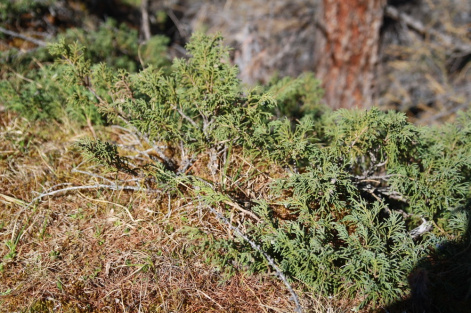Krasnoyarsk scientists: the contribution of permafrost to climate change is ambiguous
27 January 2020 г.

Climate change observed on the planet is considered as one of the threats to modern ecosystems and to daily life of humans. In Siberia, there is a massive permafrost layer with a high content of organic carbon. Due to the thawing of the frozen soil layer, carbon can be released in the form of greenhouse gases owing to the vital activity of microbes. According to the latest data, under the influence of increasing temperature, the Siberian permafrost thaws and releases the contained methane and carbon. Scientists believe that the release of these gases can accelerate climate warming.
Scientists of the Federal Research Center “Krasnoyarsk Science Center” SB RAS estimated the intensity of greenhouse gas emissions in various regions of Siberia, and the effect of permafrost on this process. The researchers determined that the emissions of carbon dioxide and methane vary significantly between natural zones and regions of Siberia. This is due to the soil heating, biological factors associated with this heating, as well as to the peculiarities of the landscape and released gases.
Geographically, Siberia is divided into several parts. Western Siberia is located between the Urals and the Central Siberian plateau and includes the Altai Region, territories stretching from the Tyumen to Kemerovo Regions. The Central Siberia includes the areas between the Yenisei and Lena rivers, with the Krasnoyarsk Region occupying its main part. Then, there is Eastern and Far Eastern Siberia, which include the Sayan mountains, Yakutia, Buryatia and the Trans-Baikal Region. At the same time, each of these zones includes areas both covered with permafrost and without it.
Estimates obtained on the basis of the analysis of three thousand observations evidence that in some parts of Siberia the non-permafrost zone emits more greenhouse gases, and areas with the permafrost has lower emissions. For example, this can be seen in Western Siberia. However, in other areas the opposite situation is observed. In Central Siberia, the greenhouse gas emissions in the permafrost zone, on the contrary, exceed such emissions in the areas without the permafrost. Scientists recorded significant changes in greenhouse gas flows over the last thirty years. In non-permafrost soils of Western Siberia, the emission of carbon dioxide increases, while in the Central part its emission is reduced. The permafrost soils of Eastern Siberia began to release more methane, while the flows of this gas in the non-permafrost zone of Western Siberia started decreasing over time.
One of the reasons for the difference in the greenhouse gas emissions between the regions of Siberia is connected with the response of soil microorganisms and plants to the heating of the soil surface. The point is that with the increasing temperature, the activity of microbes and the respiration of plant roots increase. Another circumstance concerns the peculiarities of greenhouse gas emissions. Methane formation occurs in the absence of oxygen. Usually wet areas contain more of this gas, and therefore, they emit more methane than the dry ones. Regarding carbon dioxide, the relationship is inverse. In accordance with this, the amount of emissions changes. For example, in relatively dry ecosystems, more carbon dioxide is released, while in the regions with high humidity – the same situation is observed for methane.
As explains one of the authors of the study, Oksana Masyagina, candidate of biological sciences, research associate at the V.N. Sukachev Institute of Forest “Krasnoyarsk Scientific Center” SB RAS: “In the permafrost zone there is a particular temperature regime of the soil. The maximum thawing of the permafrost active soil layer, where microbes and roots live, is recorded at the end of August. In September, the temperature begins to drop again and permafrost closes, or freezes again. All summer the permafrost slows down the process of soil heating, and it takes time until it thaws down. Only then will favorable conditions be created for microbial metabolism and plant life, resulting in the emissions of greenhouse gases”
Scientists note that shifts in the greenhouse gas emissions are associated with climate change. Therefore, it is important to monitor the carbon flow. Different parts of Siberia, depending on their characteristics, emit an uneven amount of greenhouse gases. Therefore, to assess the total volume of emissions in Siberia, it is necessary to measure greenhouse gas flows in different regions taking into account their characteristics rather than to use averaged data obtained for one area. To do this, it is necessary to extend data collection and create a network of stationary monitoring stations, which will allow us to determine the contribution of Siberia into the global carbon cycle and climate change.
This work was supported by the Russian Foundation for Basic Research and the Academy of Finland.
Share:
